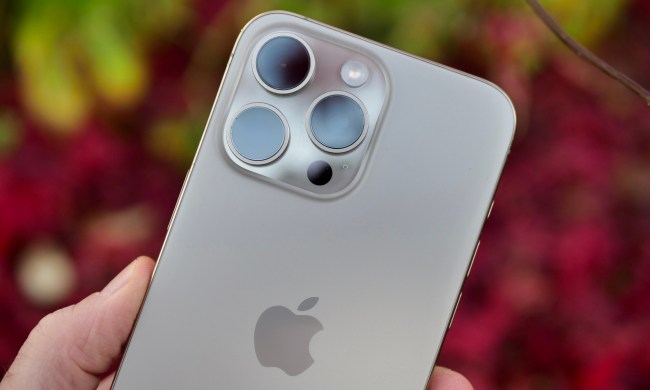It’s oddly mesmerizing to watch a smartphone get torn apart inside a blender, but not so much that it makes you want to head to the kitchen to wreck your own handset.
Scientists at the University of Plymouth in southwest England recently threw an old iPhone into a blender so you don’t have to. But they didn’t do it for fun. Instead, they wanted to analyze the materials that constitute a smartphone, partly in a bid to encourage people to recycle their devices once they’re done with them, and to consider more carefully the use of so-called “conflict minerals” in their gadgets.
As the video at the top shows, the team smashed the iPhone into fragments and dust before mixing it at 500 degrees Celsius (about 930 degrees Fahrenheit) with a powerful oxidizer to allow the researchers to perform a detailed analysis of the phone’s ingredients.
As you’d expect, they discovered it contained an array of mined materials that included iron, silicon, and chromium. Researchers also found 900 mg of tungsten, 70 mg of cobalt, 90 mg of silver, and 36 mg of gold.
A report on the University of Plymouth’s website said the results show that to create just one phone “you would need to mine 10-15 kg of ore, including 7 kg of high-grade gold ore, 1 kg of typical copper ore, 750 g of typical tungsten ore, and 200 g of typical nickel ore.”
Commenting on the research, project co-leader Dr. Arjan Dijkstra said: “We rely increasingly on our mobile phones, but how many of us actually think what is behind the screen? When you look the answer is often tungsten and cobalt from conflict zones in Africa.”
Dijkstra continued: “There are also rare elements such as neodymium, praseodymium, gadolinium, and dysprosium, not to mention quantities of gold, silver, and other high-value elements. All of these need to be mined by extracting high-value ores, which is putting a significant strain on the planet.”
Dr. Colin Wilkins, a lecturer in economic geology who also led the project, noted how people “are becoming more socially responsible and interested in the contents of what they are purchasing. Partly on the back of this, several of the major mobile phone companies have committed to upping their recycling rates. It is a positive sign that the throwaway society we have lived in for decades is changing, and we hope this project will encourage more people to ask questions about their own behaviors.”
But it’s not just tech companies that are working to improve their green credentials. Other initiatives aimed at encouraging people to recycle their old gadgets include one launched by the 2020 Tokyo Olympics committee, which is planning to make the winners’ medals using recycled electronics waste that includes everything from handsets and digital cameras to laptops and games consoles.
Digital Trends offers up some smart ideas for what you can do with an old Android or iOS device once its best days are behind it, with recycling being one of many options.


